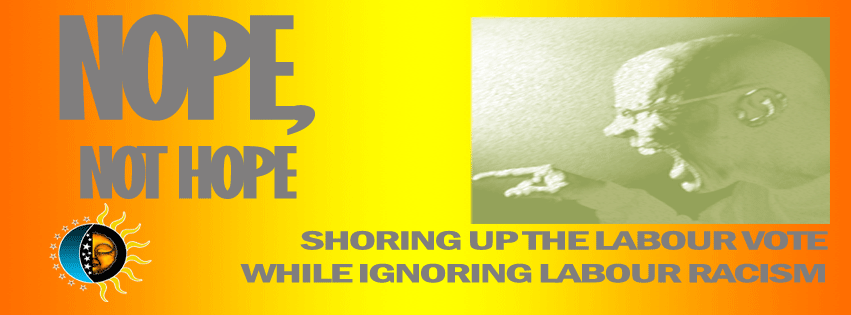 |
| Michael McManus - But for Hope not Hate, he would be the NWs 2nd UKIP MEP, and the BNP would not have gained a seat. |
During the campaign, Hope not Hate delivered almost 4m leaflets. The vast majority were in five regions - London (300k), the East & West Midlands (150k each), Yorkshire & Humberside (880k) and the North West (1.6m). They also say "Our eve of poll email was sent out to almost 600,000 addresses, making it the largest single political email in British domestic political history".
But now look at how the BNP polled. The average BNP increase across the country was 1.3%. In the five regions targeted by Hope not Hate, only two showed increases below that average - London and the West Midlands, with increases of 0.9% and 1.1% respectively. In both of these regions, the overall HnH effort was by their own admission a small one, while London as a whole has never been particularly fertile territory for the BNP. The West Midlands, despite the below average increase still gave the BNP their 4th largest vote share - 8.6% - suggesting they were close to their vote ceiling.
In the three regions where Hope not Hate directed most of their resources, the BNP vote increased by more than the national average. These were:
Region Share Increase
East Midlands 8.7% 2.1%
North West 8% 1.6%
Yorks & Hum 9.8% 1.8%
Hope not Hate also claim that thanks to their intervention, the Labour vote held up in the regions they targeted - especially the North West. While they may claim this, it is not a claim which is borne out by the statistics. The Labour vote across the country fell by 6.9%. In the North West, the Labour vote fell by 6.9% - in other words, by exactly the national average, while the BNP vote was up on its average national increase by almost 25%.
So if Hope not Hate's claims about helping to shore up the Labour vote are not true, how about their claims to have limited the BNP's vote? Did they limit the increase in their vote? As was mentioned above, that is a claim which does not bear close scrutiny. 6 of the 10 largest increases in the BNPs share of the vote - according to HnH's figures - were in areas they targeted: Copeland (+6.7%), Knowsley (+5%), St Helens (+4.2%), Barnsley (+8.8%), Rotherham (+6.2%) and Nuneaton & Bedworth (+5.6%). 7 of the BNPs 10 highest votes by local authority area were also HnH targets - Barking & Dagenham, Stoke on Trent, Barnsley, Rotherham, Burnley, NW Leicestershire, Bolsover and Ashfield.
If this is a success, we'd love to know how they would define failure.
The reality was that, faced with a general disenchantment with politicians - particularly amongst the least well off - Hope not Hate's campaign simply made the BNP seem more like the voters. There was a lack of originality, a lack of thought and a feeling of tedious repetition about Lowles' campaign that failed to catch the imagination of anyone. For all the triumphalism of Hope not Hate, their 4 million leaflets only served to highlight in the most deprived areas of the country that while Westminster politicians were stealing £10's of thousands with impunity, their local BNP activist once stole a car 20 years ago. There was little if any attempt to take the BNP on politically in their campaign, while their commitment to a 'no platform for the BNP' policy ensured the other parties largely failed to as well. The intensity of the campaign only served to highlight to a disenchanted electorate that voting BNP was a sure way to give the political establishment a poke in the eye with a sharp stick. If the BNP vote was held back, it was done so not by Hope not Hate, but by the strong showing for UKIP, which offered a moderate alternative.
So what then did Hope not Hate really achieve? Their expensive advertising campaign failed to maintain the Labour vote - which it was so transparently designed to do - while drawing to the attention of the poorest sections of society that the BNP was a party of people more like them than anyone in the three largest parties.
The end result is a matter of historical record. BNP leader Nick Griffin took the final NW MEP seat by a mere 1200 votes from UKIPs Mick McManus, who would have made an absolutely first rate MEP for the North West. Hope not Hate's misguided, tedious and scare-mongering campaign ensured voters were landed with Nick Griffin for 5 years. 1201 fewer HnH leaflets, and UKIP would kept out the BNP. That is why you have never heard of Michael McManus.

As a West Mids activist for the 2009 Euro elections, and we worked incredibly hard. As folks did elsewhere.
ReplyDeleteBut I am reliably informed, apart from the usual anti-UKIP tricks (such as steam-folded ballot papers (mostly in the North West): http://news.bbc.co.uk/1/hi/uk_politics/8083435.stm) BBC North West featured no UKIP coverage whatsoever, but constantly pumped out pieces on the BNP.
Hence, Nick Griffin MEP.